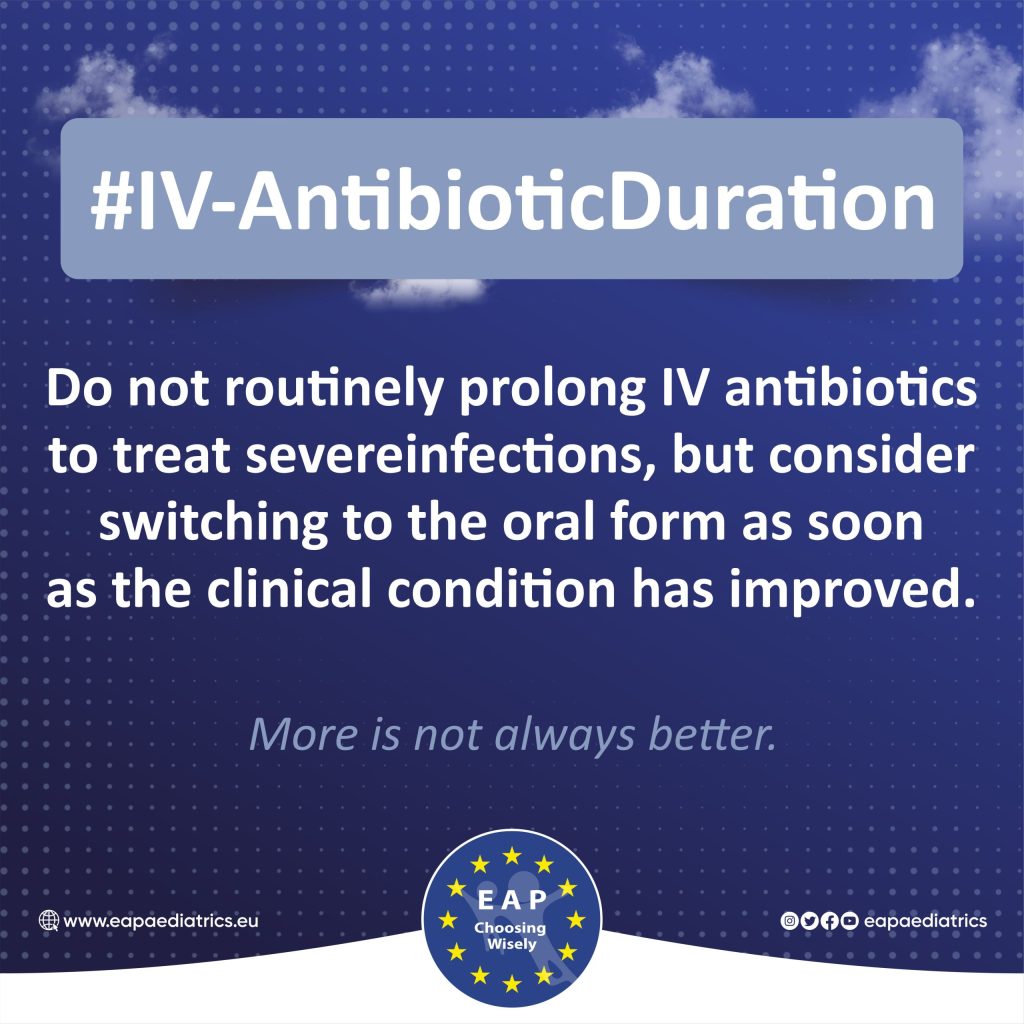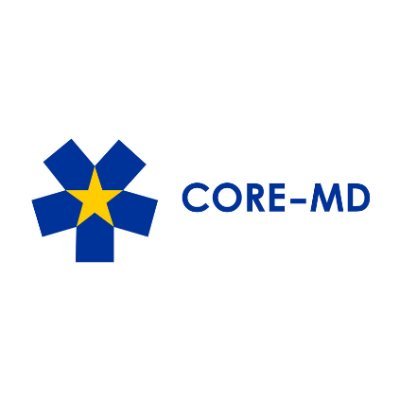
Most patients with severe infections (i.e., pyelonephritis, osteomyelitis, and uncomplicated severe pneumonia) can be safely transitioned from intravenous (IV) to oral antibiotics:
- If there are no signs of complications.
- Once clinical improvement is obtained: the child is afebrile, pain is well controlled, blood cultures have sterilized (when available) and oral medications are tolerated.
- C-reactive protein should be monitored and demonstrate a downward trend.
- After 48 to 72 hours of empiric antibiotic initiation, consider a formal reassessment of the appropriateness of antibiotic selection, when more clinical and laboratory data become available (including culture results).
What is known about IV antibiotics duration and oral switch timing:
- Antibiotics should be administered for the minimum effective length to reduce antibiotic resistance, patient harms, and cost, and preserve drug availability.
- Numerous prospective controlled studies demonstrate that oral antibiotics are as effective and safer, and lead to shorter hospitalisations and fewer adverse events than IV-only therapy, which is better for patients and hospitals.
How to talk with patients and parents about IV antibiotics duration and oral switch timing:
- A rapid switch to oral antimicrobial therapy, when clinically allowed, is equally effective to IV therapy.
- It has many benefits such as reducing IV-correlated side effects, shorter hospital stay and reducing patient discomfort.
This EAP recommendation is in accordance with Choosing Wisely recommendations of:
American Family Physicians (AFP):
https://www.aafp.org/pubs/afp/collections/choosing-wisely/461.html
References:
- Ammenti A, et al. Febrile urinary tract infections in young children: recommendations for the diagnosis, treatment, and follow-up. Acta Paediatr. 2012 May;101(5):451-7. PMID: 22122295
- Hannon M, Lyons T. Pediatric musculoskeletal infections. Curr Opin Pediatr. 2023 Jun 1;35(3):309-315. PMID: 36802036
- McMullan BJ, Andresen D, Blyth CC, Avent ML, Bowen AC, Britton PN, Clark JE, Cooper CM, Curtis N, Goeman E, Hazelton B, Haeusler GM, Khatami A, Newcombe JP, Osowicki J, Palasanthiran P, Starr M, Lai T, Nourse C, Francis JR, Isaacs D, Bryant PA; ANZPID-ASAP group. Antibiotic duration and timing of the switch from intravenous to oral route for bacterial infections in children: systematic review and guidelines. Lancet Infect Dis. 2016 Aug;16(8):e139-52. PMID: 27321363
- Revised WHO Classification and Treatment of Pneumonia in Children at Health Facilities: Evidence Summaries. Geneva: World Health Organization; 2014. PMID: 25535631

